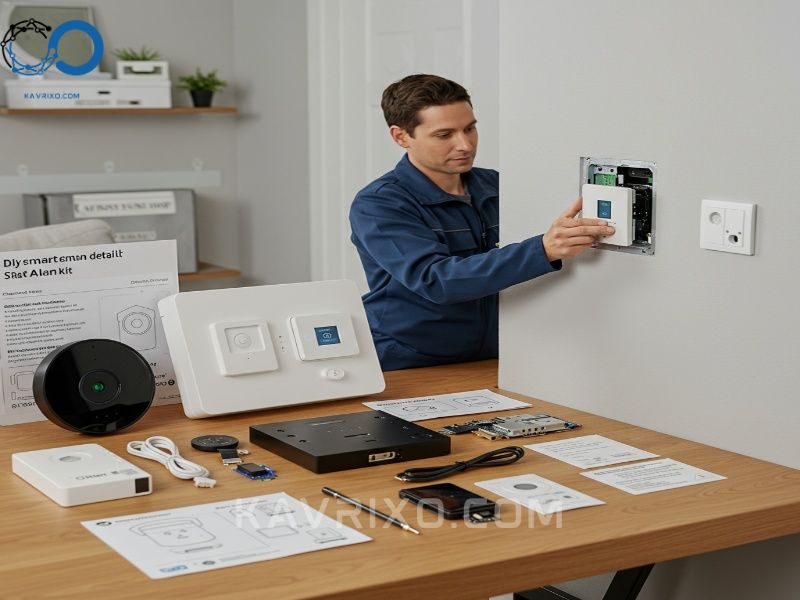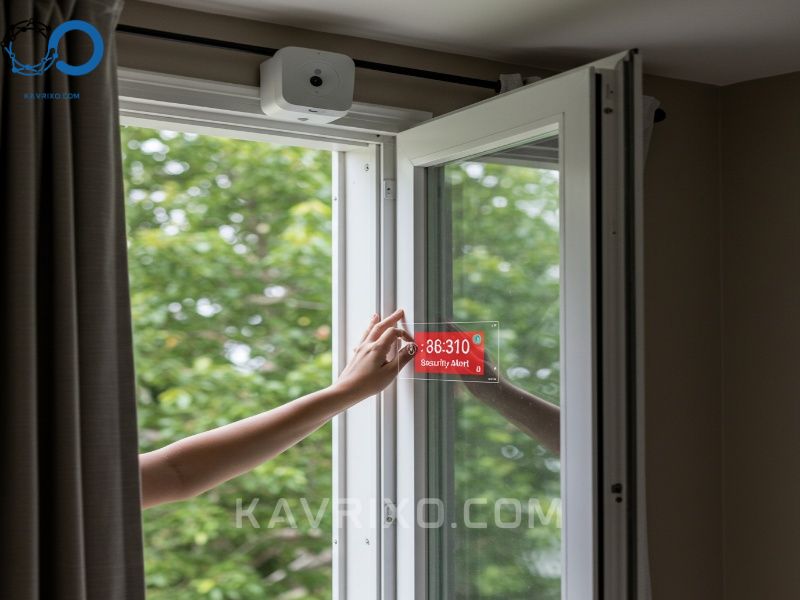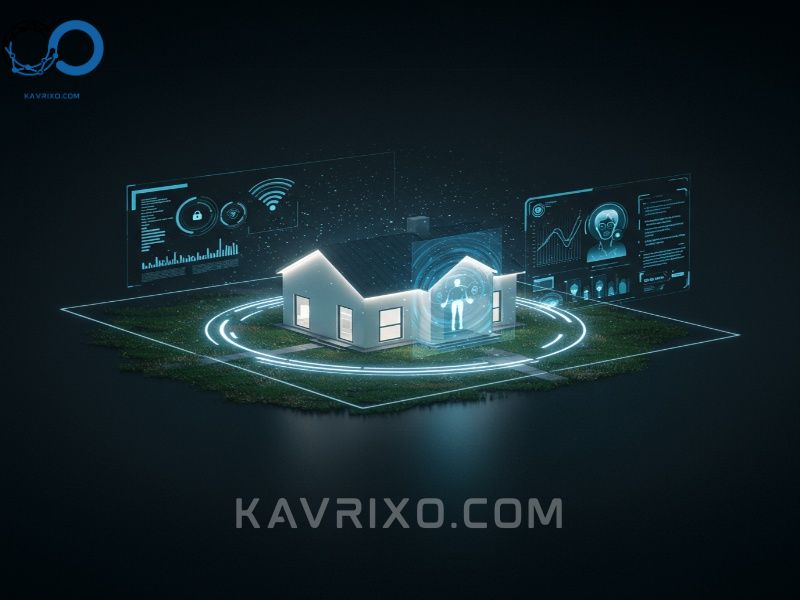For decades, home security relied on simple, noisy perimeter alarms designed purely to deter. Today, the landscape has fundamentally shifted. We are no longer simply deterring; we are monitoring, verifying, and integrating security into the fabric of our daily lives. The rise of the smart alarm system has transformed home protection from a reactive measure into a proactive, intelligent defense network.
This comprehensive guide delves deep into the world of connected home security, exploring not just the features, but the underlying technologies, installation options, and crucial considerations you must navigate to choose the ideal system for your peace of mind.
Contents
- 1 The Evolution of Home Security: Why Smart Alarms Are Essential Today
- 2 Defining the Smart Alarm: Beyond the Siren
- 3 Why Upgrade to a Smart Alarm System?
- 4 Types of Smart Alarm Systems Available
- 5 Key Features Driving the Smart Alarm Market
- 6 Choosing the Right Smart Alarm System
- 7 Installation, Maintenance, and Troubleshooting
- 8 The Future of Home Protection: Predictive Smart Alarms
The Evolution of Home Security: Why Smart Alarms Are Essential Today
Traditional security systems often suffered from two major flaws: false alarms and limited remote accessibility. If a siren went off while you were away, you had no immediate way to verify the threat, leading to wasted time and resources for both homeowners and emergency services.
The smart alarm changes this paradigm entirely. By leveraging the power of the internet, artificial intelligence (AI), and sophisticated sensor technology, these systems offer unparalleled control and situational awareness. They don’t just alert you to a problem; they tell you what the problem is, where it is, and often provide visual evidence to back it up.
Whether you are looking for a simple, self-monitored setup or a robust, professional-grade smart alarmanlage (intelligent alarm system), understanding the core components and capabilities is the first step toward modernizing your protection.

Defining the Smart Alarm: Beyond the Siren
A smart alarm is more than just a collection of sensors; it is an integrated security ecosystem connected to the internet (or a cellular network) and managed primarily through a centralized application on your smartphone or tablet.
Unlike older systems, which relied on hardwired connections and fixed phone lines, smart systems communicate wirelessly, offering flexibility in placement and instant notification capabilities regardless of where the user is physically located.
Core Components of a Modern System
A robust smart alarm system typically includes several key elements working in concert:
- The Hub (or Panel): This is the brain of the operation. It communicates with all the sensors, manages user codes, handles connectivity (Wi-Fi, Z-Wave, Zigbee, cellular), and sends notifications to the user or the professional monitoring center.
- Perimeter Sensors: These include door/window contact sensors that detect when a protected opening is breached.
- Interior Sensors: Motion detectors (often pet-immune to reduce false alarms) monitor movement within rooms. Glass break sensors listen for the specific frequency associated with shattering glass.
- Cameras: Indoor and outdoor cameras provide video verification and live streaming. Advanced cameras often feature person detection, facial recognition, and two-way audio.
- Environmental Monitors: These include smoke alarms, carbon monoxide detectors, and flood sensors, which are seamlessly integrated to trigger system-wide alerts.
- Key Fobs/Keypads: Physical interfaces for arming and disarming the system locally, often featuring panic buttons.
The Role of Connectivity and AI (Artificial Intelligence)
The “smart” aspect is heavily reliant on connectivity protocols. Wireless communication (like Z-Wave and Zigbee) allows devices to communicate efficiently, often creating a mesh network that strengthens the signal across large properties.
Furthermore, AI and machine learning are increasingly integrated:
- False Alarm Reduction: AI helps differentiate between a burglar and a pet or a tree branch moving outside, significantly reducing unnecessary alerts.
- Predictive Arming: Systems learn your routine—when you typically leave for work or go to bed—and can suggest or automatically adjust the system’s arming status (geofencing).
- Video Analytics: Cameras use AI to distinguish between people, vehicles, and animals, ensuring that notifications are relevant and actionable.

Why Upgrade to a Smart Alarm System?
The decision to switch from an outdated or non-existent security setup to a modern, connected smart alarm system is driven by practical benefits that enhance safety, convenience, and control.
Enhanced Security and Proactive Protection
Traditional alarms merely react to a breach. Smart systems offer layers of proactive protection:
- Instant Notifications: If a sensor is tripped, you receive an immediate alert via your phone, often with an accompanying video clip. This allows you to verify the threat and contact authorities instantly, saving crucial minutes.
- Remote Disarming for Verified Access: Need to let a cleaner or delivery person into your home while you are miles away? You can temporarily disarm the system for a specific user and monitor their entry and exit via the integrated cameras.
- Cellular Backup: Most high-quality smart alarm systems utilize cellular backup communication. If a burglar cuts your power or internet line, the system remains operational and connected to the monitoring center, maintaining the integrity of the security network.
Remote Control and Accessibility
The ability to manage your entire home security apparatus from anywhere in the world is perhaps the biggest draw of a smart alarm.
If you forget to arm the system before leaving, a quick tap on the app remedies the oversight. If you are worried about a storm hitting your region, you can check your outdoor cameras instantly. This level of control fundamentally changes how homeowners interact with their security. It moves security management from a physical chore to a simple digital task.
Integration with the Smart Home Ecosystem
A truly intelligent smart alarm doesn’t operate in a silo; it integrates seamlessly with other smart home devices. This allows for powerful automation routines:
- Safety Automation: If the smoke detector goes off, the alarm system can automatically unlock smart doors for fire department access, turn on all smart lights to aid evacuation, and shut down the HVAC system to prevent smoke circulation.
- Security Automation: When the system is armed, the smart locks engage, the garage door closes, and lights turn off. When disarmed, the system can adjust the thermostat and turn on specific interior lights (e.g., pathway lighting).
This integration is vital for creating a truly cohesive and reactive connected home security environment.

Types of Smart Alarm Systems Available
When shopping for a smart alarm solution, one of the most critical decisions involves the installation and monitoring model. This choice often dictates the required technical skill, the monthly expense, and the level of professional support you receive.
DIY vs. Professionally Installed Systems
The market is generally divided into two main camps:
1. DIY (Do-It-Yourself) Systems
DIY systems are designed for easy, tool-free installation. Components are usually pre-paired and rely on adhesive strips or simple screw mounts.
- Pros: Lower upfront cost, no long-term contracts (usually optional monitoring), flexible installation, and easy relocation if you move.
- Cons: The user is responsible for installation quality, maintenance, and basic troubleshooting. Monitoring is often self-monitored (you get the alert, you call 911) unless a subscription is purchased.
2. Professionally Installed Systems
These systems are installed by certified technicians, often involving more robust, proprietary hardware and sometimes requiring minor drilling or wiring. These are often the systems referred to when discussing a high-end smart alarmanlage.
- Pros: Guaranteed installation quality, specialized placement advice, immediate integration with 24/7 professional monitoring, and robust system components designed for long-term use.
- Cons: Higher upfront costs, potentially long-term contracts (often 3-5 years), and less flexibility if you want to swap out components.
Monitored vs. Unmonitored Solutions
The monitoring choice dictates who responds when an alarm is triggered:
- Unmonitored (Self-Monitoring): The homeowner receives all alerts directly. If a burglary occurs, the homeowner must verify the threat and contact emergency services. This is cost-effective but requires the homeowner to be constantly available and responsive.
- Professionally Monitored: When the alarm is triggered, the signal goes to a central station staffed 24/7. Operators verify the alarm (often calling the homeowner first) and then dispatch police, fire, or medical services as needed. This service provides the highest level of security assurance but requires a monthly subscription fee.

Specialized Systems (Fire, Flood, Carbon Monoxide Integration)
Modern security systems extend far beyond theft prevention. A crucial aspect of a comprehensive intelligent notification system is the integration of environmental hazard detection.
Traditional smoke detectors are isolated. If they go off, they only sound locally. A smart environmental monitor, however, integrates its alert into the main system hub. This means:
- If smoke is detected, the siren sounds, lights flash, and you receive a phone alert immediately.
- If professionally monitored, the central station receives a “fire” signal, allowing them to dispatch the fire department even if you don’t answer your phone.
These features drastically increase the safety value of the overall smart alarm investment, covering risks that are often statistically more likely than burglary.
Key Features Driving the Smart Alarm Market
The rapid advancement in sensor and communication technology has introduced sophisticated features that define the current generation of smart alarm systems. Understanding these capabilities is crucial for selecting a future-proof system.
Video Verification and Live Streaming Capabilities
One of the greatest advancements is the ability to confirm the nature of an alarm event instantly.
- Video Verification: When a motion sensor or door contact is tripped, the system automatically begins recording a short clip or streams live video to the user. This visual evidence allows the user (or the monitoring center) to confirm if the alarm is genuine or a false trigger (e.g., a branch or a cat). This drastically reduces penalties associated with false police dispatches.
- Two-Way Audio: Many cameras and video doorbells now include two-way talk, allowing you to communicate with someone at your door, whether it’s a visitor, a delivery person, or an intruder you wish to deter.

Advanced Sensor Technology (Motion, Glass Break, Door/Window)
Sensors are the eyes and ears of the system, and they have become highly specialized:
- Pet-Immune Motion Detectors: These sensors can be calibrated to ignore movement below a certain weight threshold (e.g., 40-80 lbs), ensuring your dog or cat doesn’t trigger the alarm every time they walk through the living room.
- Vibration Sensors: These small, often inconspicuous sensors adhere directly to valuable items or windows, triggering an alert if movement or tampering is detected before a full breach occurs.
- Image Sensors: Some specialized motion detectors include a built-in low-resolution camera that takes a snapshot upon motion detection. While not as high-quality as a dedicated security camera, these offer quick visual context without the bandwidth demands of constant video streaming.
Geofencing and Automated Arming/Disarming
Geofencing uses your smartphone’s location services to define a virtual perimeter around your home. When your phone crosses this boundary, the smart alarm system can automatically perform actions:
- Arming Reminders: If you leave the geofence and the system is still disarmed, the app will send a proactive reminder: “Did you forget to arm the system?”
- Automated Disarming: As you pull into your driveway, the system can disarm itself, unlock the front door, and turn on lights, providing a seamless “Welcome Home” experience. This convenience is a hallmark of truly intelligent security.
Understanding the Importance of Battery Backup and Cellular Communication
For any security system to be reliable, it must remain operational during power outages or internet failures.
High-quality smart alarm hubs contain rechargeable battery backups that can power the system for 12 to 24 hours. Crucially, they also rely on cellular communication (similar to a mobile phone signal) as a secondary communication channel. If your Wi-Fi is down or the lines are cut, the system can still transmit emergency signals to the monitoring center, ensuring uninterrupted protection. This redundancy is non-negotiable for serious security installations, especially those utilizing a professional smart alarmanlage.
Choosing the Right Smart Alarm System
Selecting the perfect smart alarm solution requires balancing budget, technical aptitude, and the specific security risks of your property.
Assessing Your Property’s Security Needs
Before shopping, conduct a thorough audit of your home:
- Perimeter Assessment: How many doors and ground-floor windows need sensors? Do you have unique access points like basement windows or roof access?
- Vulnerability Hotspots: Do you need outdoor cameras to monitor dark corners or garages? Is there a need for specific protection like flood sensors in the laundry room or carbon monoxide detectors near the furnace?
- Pet Considerations: If you have pets, ensure any motion detectors you purchase are pet-immune to prevent nuisance alarms.
- Connectivity: Assess your home’s Wi-Fi dead zones. Large homes or homes with thick walls may require systems that utilize mesh networking protocols (Z-Wave or Zigbee) over standard Wi-Fi to ensure all sensors maintain a strong connection to the hub.
Considering Long-Term Costs and Subscriptions
While the upfront hardware cost is important, the monthly subscription fee for monitoring and advanced features (like cloud video storage) often represents the largest long-term financial commitment.
- Subscription Tiers: Review what each tier offers. Does the basic monitoring include cellular backup? Is video storage limited? Some systems lock crucial features (like geofencing automation) behind higher-priced tiers.
- Contract Length: If opting for a professionally installed system, understand the contract duration and the penalties for early termination. DIY systems often offer month-to-month flexibility.
The hardware communication protocol affects device range, battery life, and compatibility:
| Protocol | Range/Mesh | Battery Life | Compatibility | Notes |
| Wi-Fi | Shorter; No mesh | Shorter | High (easy integration) | Requires more battery power; can strain Wi-Fi network. |
| Z-Wave | Long; Mesh Network | Excellent | High (common security standard) | Specialized low-power frequency; ideal for sensors. |
| Zigbee | Long; Mesh Network | Excellent | High (common automation standard) | Similar to Z-Wave, but often faster data transfer. |
For a robust and reliable smart alarm network, systems that utilize Z-Wave or Zigbee for sensors and peripherals, reserving Wi-Fi for cameras and the hub, generally offer the best balance of battery life and security performance.
Installation, Maintenance, and Troubleshooting
Even with user-friendly DIY systems, proper installation and ongoing maintenance are crucial for the system’s effectiveness.
The Setup Process: From Unboxing to Activation
- Hub Placement: Locate the hub centrally, ideally near your router, but in a secure, non-obvious location that is difficult for intruders to tamper with immediately upon entry.
- Sensor Placement Strategy: Place contact sensors on all primary entry points. Motion sensors should be placed in corners to maximize coverage, avoiding placement directly opposite heat sources (like radiators) or large windows that might cause false triggers.
- Testing: Thoroughly test every single sensor, camera, and keypad after installation. Walk through the motion detector zones, and ensure the system successfully sends test signals to the monitoring center if you subscribe to that service.
Routine Maintenance for Optimal Performance
A smart alarm system requires minimal maintenance, but neglecting key areas can compromise security:
- Battery Management: The biggest maintenance task is replacing sensor batteries. Modern systems will alert you months in advance when a sensor battery is low. Ignoring these warnings can lead to system failures.
- Camera Lens Cleaning: Outdoor camera lenses can become obscured by dust, spiderwebs, or rain spots. Routine cleaning ensures clear video verification footage.
- Firmware Updates: Always ensure the hub and critical components have the latest firmware updates. These often contain security patches and stability improvements.
The Future of Home Protection: Predictive Smart Alarms
The evolution of the smart alarm is leaning heavily toward prediction rather than just reaction. Future security systems will leverage deeper AI and machine learning to analyze patterns in local crime data, weather conditions, and personal activity schedules.
Imagine a system that learns you rarely use your back door after 8 PM. If that door is opened at 11 PM, the system might trigger a higher-priority alert, even if the system is technically disarmed. Furthermore, integration with municipal systems and first responders will become faster and more accurate, potentially allowing emergency services to access verified video footage instantly, further reducing response times.
Whether you choose a basic, self-monitored system or a high-end, professionally maintained smart alarmanlage, investing in a quality smart alarm today is the most effective step toward securing your property and gaining true peace of mind in an increasingly connected world.

